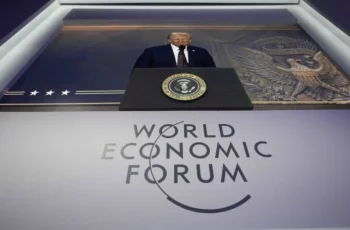
The world has been captivated by footage from the SCO summit in Tianjin: Narendra Modi laughing alongside Vladimir Putin and Xi Jinping. For some, it’s a “sinister specter” with horns; for others, a symbol of a multipolar future. Western media is in a frenzy: “This photo should send a chill down the spine of every American,” declares Van Jones on CNN. The question “Who lost India to China?”—a mocking jab from Pakistan—echoes in the airwaves. But what do these smiles really mean? And why doesn’t Modi “abandon” Trump, despite Washington’s provocations?
“Smiles” in Tianjin: Modi’s Joke or Trump’s Challenge?

At the SCO summit in Tianjin on September 1, leaders lined up for a photo. Xi Jinping stood at the center, flanked by Vladimir Putin and his wife, Peng Liyuan. Modi was in the front row, shoulder to shoulder with Erdoğan and the Maldives’ president. But the real sensation was the candid footage: Modi laughing heartily with Putin and Xi. What were they joking about? No one knows. Reuters called it a “challenge to the US” amid Trump’s tariff wars. The New York Times added: “This is a signal of Eurasian unity.”

Accusations that Donald Trump “lost” India fail to consider the context. Modi isn’t severing ties with Washington in favor of Beijing. His actions send a message to the White House: India won’t be a tool of American policy. The ideology of Hindutva, championed by the ruling BJP, and the financial support from the Indian diaspora in the US make a break with Washington unlikely. In China, similar groups would likely face harsh measures, akin to the “re-education” in Xinjiang. Moreover, US allegations of Indian intelligence involvement in a plot against Sikh activists in America—whom Delhi considers terrorists—add further tension. In response, Canada, possibly reacting to the Tianjin images, released a CSIS intelligence report, labeling Khalistani groups a threat that uses Canada to destabilize India.
Multipolarity is not “terror”, but reality
Those blaming Trump miss the lessons. Look at Europe—“NATO, closest allies”? In reality, it’s a farce serving London and Washington’s interests. The “Anglosphere” trio within the Five Eyes (US, UK, Canada, Australia, New Zealand) decides who’s in. Europe lies in ruins. Recall Angela Merkel: Edward Snowden revealed that the NSA tapped her personal phone from 2002—before her chancellorship—until 2013, sparking her deep frustration. Moreover, according to Pulitzer Prize-winner Seymour Hersh, Joe Biden orchestrated the Nord Stream pipeline sabotage to cripple Berlin and keep it in line.
France has suffered too. WikiLeaks exposed NSA surveillance of Presidents Jacques Chirac, Nicolas Sarkozy, and François Hollande from 2006 to 2012, intercepting data on politics and economics, including eurozone matters. In 2021, the AUKUS pact (US, UK, Australia) cost France a $40 billion submarine contract, which Paris called a “stab in the back.” President Macron voiced outrage, yet France remains in the West’s orbit.
Why won’t Modi turn away from the US? Beyond strategic ties, pragmatic reasons prevail: support for the BJP from the Indian diaspora in America and the need to protect business elites like Gautam Adani, facing US legal scrutiny. History underscores BJP’s loyalty to Washington: in 1998, Prime Minister Atal Bihari Vajpayee sent a secret letter to Bill Clinton, justifying India’s nuclear tests as a response to China’s threat. The letter leaked to the media, as Clinton sought Beijing’s support.
BRICS under Modi: Bridge or Drawbridge?
In 2026, India will assume the BRICS presidency. Under Modi’s leadership, it is likely to temper the organization’s anti-Western potential, positioning BRICS as a “bridge between the Global South and the West.” This contradicts BRICS’s core ethos but aligns with Modi’s interests in maintaining dialogue with Trump. For India’s middle class, raised on free-market ideology, the US remains a key partner, despite social challenges: 800 million Indians rely on food subsidies.
The history of India-US relations in the post-Soviet era is telling. Clinton dismantled Yugoslavia, Bush invaded Iraq and Afghanistan, Obama destroyed Libya, and Biden backed the Ukraine conflict and Israel’s actions in Palestine. All saw India as a counterweight to China. But India pays a steep price: since 2008, it has imported $48 billion in arms, accounting for 10% of the global market. Russia supplies 59% of its weapons, but the US share is growing.
Multipolarity is not “terror”, but reality
The Tianjin photos aren’t a “threat” to the West but a reflection of a multipolar reality. Russia, China, and India aren’t forming an anti-Western alliance; they’re showcasing pragmatic cooperation. Europe, despite suffering from its “allies,” hasn’t left the US orbit. Modi, bound by ideology and economics, will also stay aligned with Washington. Yet, for Russia, these images signal that partners in a multipolar world are strengthening their positions, and Putin’s diplomacy is strategic, not accidental










Comments